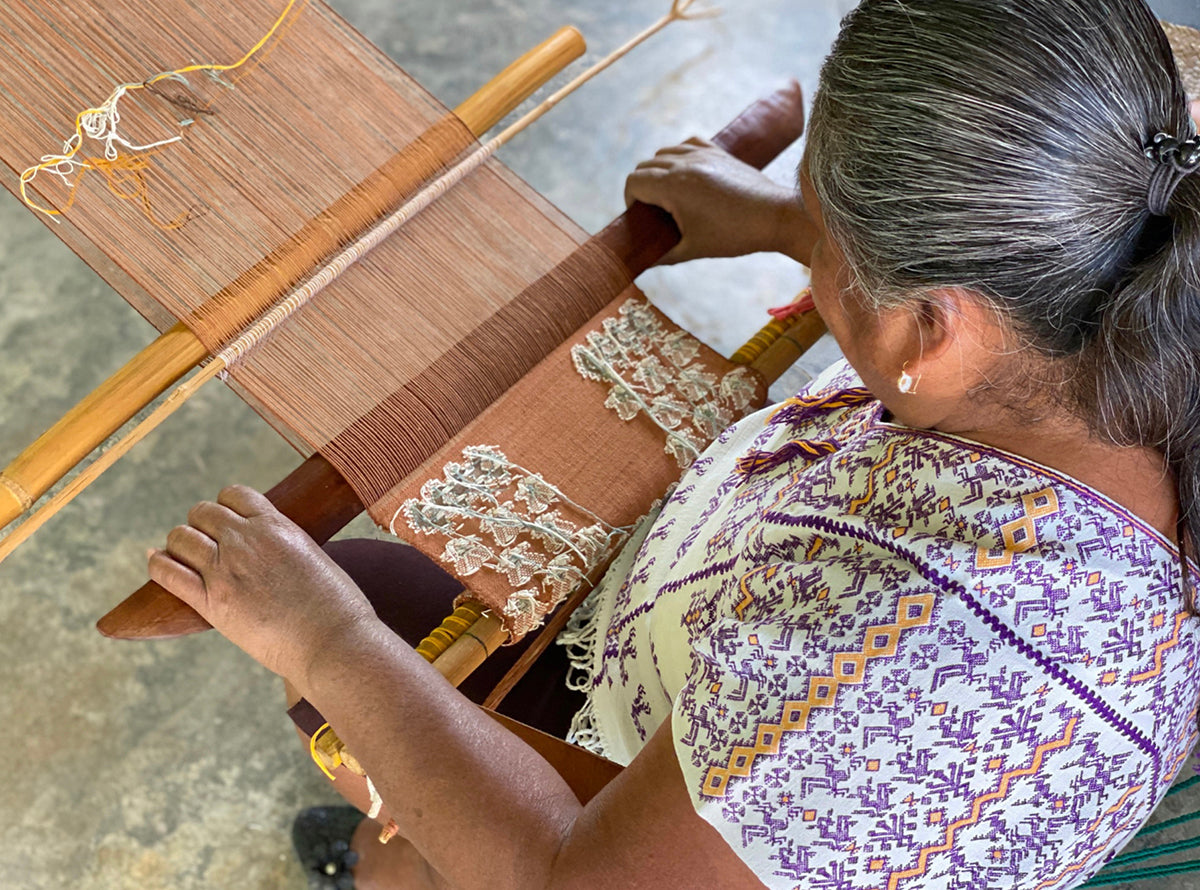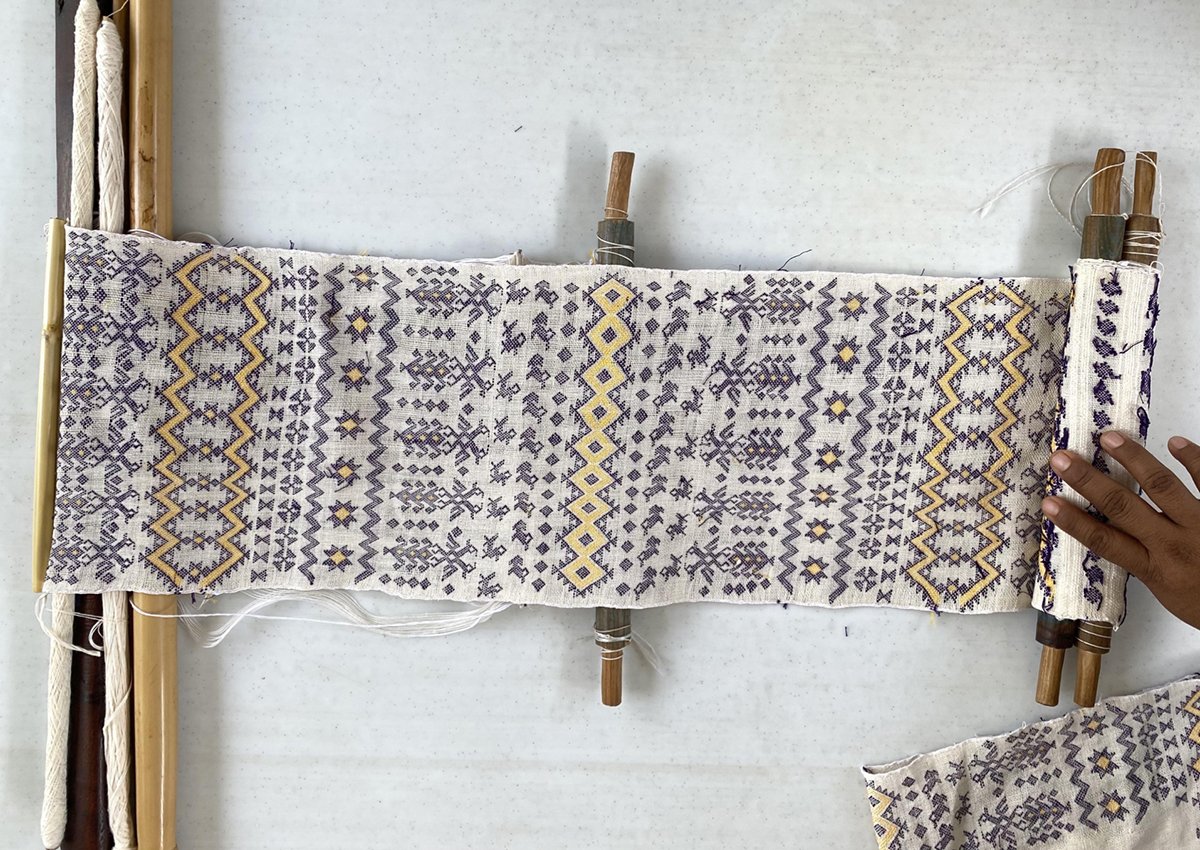Shipments from India to the US via international express mail have resumed with "delivery duty paid." We will cover the US tariff costs and keep our 2025 prices the same through the end of this year. Prices will increase in 2026 to cover the costs of US tariffs.
Shipments from India to the US via international express mail have resumed with "delivery duty paid." We will cover the US tariff costs and keep our 2025 prices the same through the end of this year. Prices will increase in 2026 to cover the costs of US tariffs.
A column with no settings can be used as a spacer
Link to your collections, sales and even external links
Add up to five columns
A column with no settings can be used as a spacer
Link to your collections, sales and even external links
Add up to five columns
Launch of the Du Xhil - San Bartolo Yautepec Collection
April 08, 2023

The Du Xhil – San Bartolo Yautepec textile collection launches April 28 and 29 at a pop up sale and exhibition at El Diablo y La Sandia Boca del Monte in the historical center of the city of Oaxaca, in southern Mexico. The textiles have been handwoven by 24 Zapotec weavers from San Bartolo Yautepec in the Sierra Sur region of the state of Oaxaca. The special launch event is the culmination of the textile design project sponsored by the Marvin and Sylvia Rubin Family Foundation and supported by the R.I.S.E. Artisan Fund.
For the past 18 months, social designers, Maddalena Forcella and Ana Paula Fuentes, have collaborated with 24 weavers in the Zapotec community of San Bartolo Yautepec, in the Sierra Sur region of Oaxaca state in southern Mexico to develop this elevated, handwoven textile collection.
Using back-strap looms that predate the arrival of Spanish colonialists, the Zapotec weavers produce fabric with intricate brocade motifs. The fabric is then used to create huipiles, traditional Mexican garments. “For us, these are some of the most beautiful huipiles in México,” Fuentes said. “But unfortunately, the weaving tradition has been disappearing little by little, mainly because of the lack of markets. Many women have stopped weaving.”
Just a few of the weavers in this group have been weaving for more than a decade. Most of the weavers in this group, including the two young men, have only recently started weaving. Micaela Jiménez, one of the master weavers, began weaving when she was eight years old, while Jorge López started weaving just two and a half years ago. The 22 women who are part of the group range in age from 18 to 60 years old, and the two young men are 18 and 20.

Using back-strap looms that predate the arrival of Spanish colonialists, the Zapotec weavers of Du Xhil – San Bartolo Yautepec produce handwoven fabric with intricate brocade motifs. The fabric is then used to create huipiles, traditional Mexican garments. © 2023 Ana Paula Fuentes

Weavers of the Du Xhil - San Bartolo Yautepec collective use backstop looms to create their textiles. The weavers learned new design and production skills in a series of textile workshops sponsored by the Marvin and Sylvia Rubin Family Foundation and supported by the R.I.S.E. Artisan Fund. © 2023 Ana Paula Fuentes
“A textile project like this is a precious opportunity for the weavers from this community to keep alive a textile tradition with a deep cultural provenance and a very special, and elaborate, textile technique,” noted Forcella. “In the contemporary world, these textile traditions are in danger of being replaced by simpler, cheaper, lower quality imitations. It would be a tremendous shame to lose this heritage. By introducing this group to new buyers and new markets, we hope to keep this tradition alive. We want to ensure these weavers can thrive by introducing them to new skills, as well as to new markets.”
Developing natural dyeing skills and other sustainable practices has been a core component of the community workshops led by the two designers. Those artisans who did not already know how to dye were taught to dye natural fibers with local dyes made from native plants, fruit and tree barks. Cotton and silk fibers as well as the dye materials can be sourced from communities within the region further strengthening the local economies and creating economic opportunities in Oaxaca.

Weavers of San Bartolo Yautepec clean and wash skeins of cotton yarns with soap and sodium carbonate, and then etch them with alum, preparing them for dyeing with natural dyes made from native plants, fruit and tree barks. The weavers can create a color palette of 29 different colors using 15 different materials in various combinations. © 2023 Ana Paula Fuentes
In addition to natural dyeing, the workshop series has included color theory and design concepts, analysis of traditional motifs and weaving practices, sampling and prototyping of new designs, as well as discussion of the business challenges and strategies for marketing and sales promotion for the collection the group has been developing.
“This project working with the weavers of San Bartolo Yautepec has been very special for us,” Fuentes explained. “Most of the group were novices, and through this project, they’ve been able to improve their weaving and design skills to the point where they can earn a living from creating these beautiful textiles. We want textile buyers from local shops, cultural tour guides, design studios, as well as any textile lover visiting Oaxaca to come to the exhibition and sale to meet these weavers, and to appreciate the exceptional quality of these intricately woven textiles.”
As a social design project, the aim is for more than the transformation of traditional textiles into contemporary textile collections, but also to have a positive impact for the weavers and community. The goal is to enable the weavers to establish their own enterprise and build their own market relationships. The first step in that process toward their own business autonomy will be the launch of the Du Xhil – San Bartolo Yautepec collection in April.
Established in 2005, The Marvin and Sylvia Rubin Family Foundation focuses on social, medical and educational programs in the United States and abroad with an emphasis on working with women.
R.I.S.E. Artisan Fund was created by Realize Impact and Sprout Enterprise® to invest in early-stage enterprises creating sustainable livelihoods for rural communities with few economic alternatives. Sustainability is a key investment theme of the fund. Named one of the Transformative 25 Funds in 2022, R.I.S.E. Artisan Fund has been recognized by Integrated Capital Investing for transforming finance to benefit people and the planet.
Visit the R.I.S.E. Artisan Fund Blog to Read the San Bartolo Yautepec Textile Workshop Reports.
